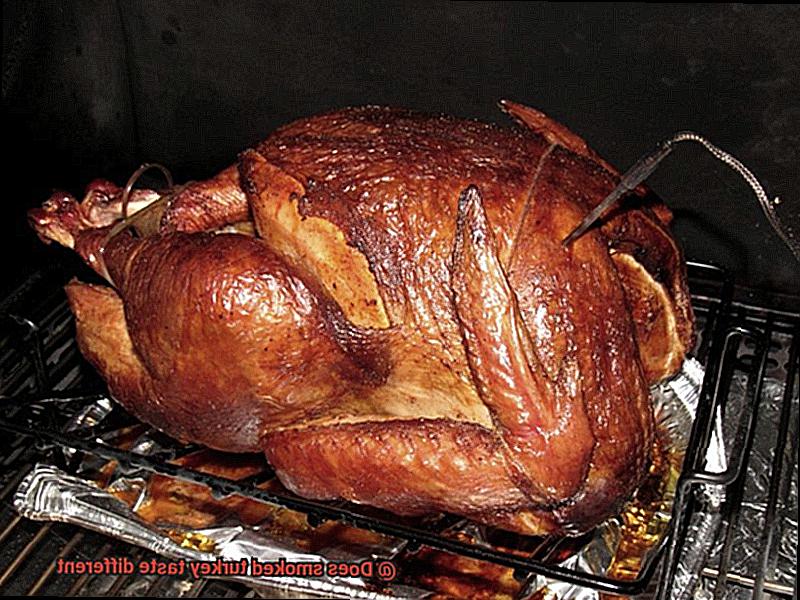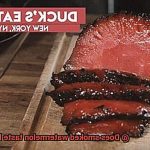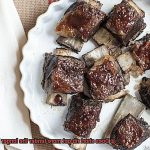Are you a turkey aficionado? Do you consider yourself a connoisseur of all things poultry? If so, then you need to try smoked turkey. It’s an experience that will leave your taste buds tingling and your stomach satisfied. But the million-dollar question is, does smoked turkey taste different from its roasted counterpart? Let’s dive in and find out.
First off, smoking a turkey involves exposing it to smoke from wood chips or pellets like hickory or applewood. The smoke permeates the meat, infusing it with a rich, smoky flavor that is unmatched by any other cooking method. Plus, the smoke helps to tenderize the meat, leaving it juicy and succulent.
But it’s not just about flavor – the texture of smoked turkey is also unique. When done right, the skin becomes crispy and crackly while the meat inside remains moist and tender. It’s like biting into a flavorful cloud of goodness.
And let’s not forget about health benefits – smoking requires little to no added oils or fats, making it an excellent option for those who want to indulge without compromising their healthy lifestyle.
In conclusion, if you haven’t tried smoked turkey yet, what are you waiting for? The combination of smoky flavor and succulent texture make it an irresistible choice for any occasion. Next time you’re planning a feast or just craving some delicious protein, give smoked turkey a try – your taste buds will thank you.
Contents
Types of Wood Used for Smoking: How Do They Affect the Taste?
Smoking turkey is a culinary art that can be elevated to new heights with the right wood. The type of wood used for smoking can have a significant impact on the flavor of the meat, making it important to choose the right kind. Here are five different types of woods that can be used for smoking turkey and how they affect the taste.
Hickory
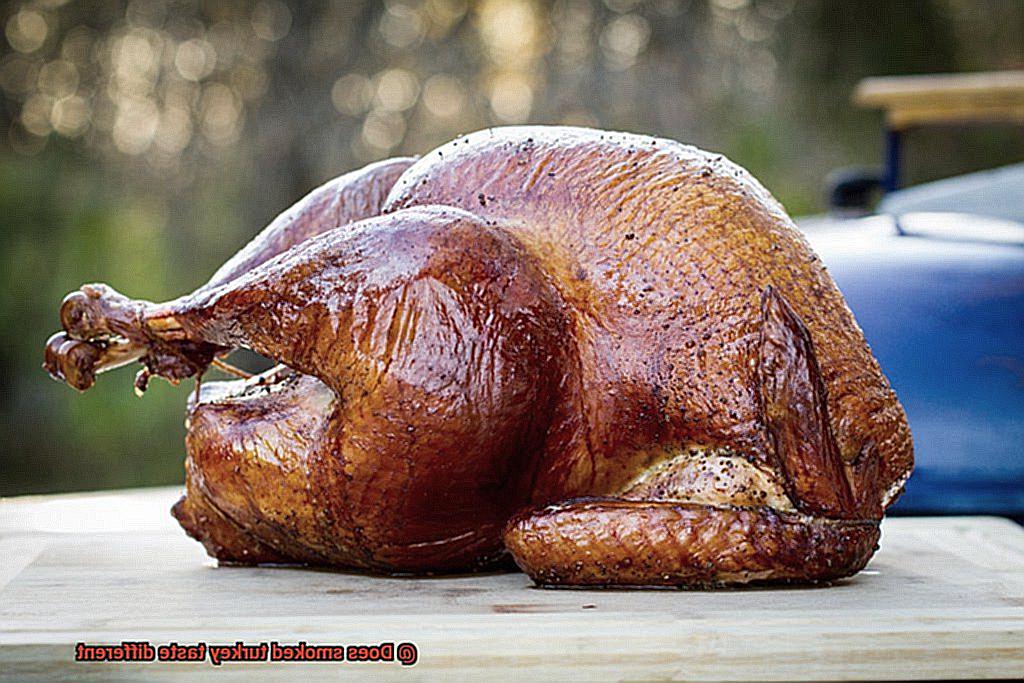
Hickory is a popular choice for smoking turkey due to its sweet and savory flavor. This wood has a strong taste that can easily overpower the natural flavors of the meat if too much is used. However, when used in moderation, hickory can enhance the taste of the turkey and give it a rich, smoky flavor.
Mesquite
If you’re looking for a bolder flavor profile, mesquite wood is an excellent option. This wood has an intense and earthy flavor that pairs well with beef and pork but can also be used for turkey. However, be cautious not to use too much mesquite as its strong taste can make the meat taste bitter.
Fruitwoods
For those who prefer a milder wood, fruitwoods such as apple and cherry are great options. Applewood has a subtle sweetness that pairs well with poultry, while cherrywood has a mild and fruity flavor that adds a touch of sweetness to the meat. These woods won’t overpower the natural flavors of the turkey and are perfect for those who want a delicate taste.
Oak
Oak is a versatile wood that can be used as a base for other woods or on its own. It has a mild flavor that won’t compete with the turkey but can provide a solid foundation for other flavors. Oak is perfect for those who want to experiment with different wood combinations to create unique flavors.
Pecan
For those who want to try something different, pecan wood is an excellent option. This wood has a nutty flavor that complements the taste of poultry and pork. Pecan wood is a great choice for those who want to add a touch of uniqueness to their smoked turkey.
In conclusion, choosing the right type of wood can make all the difference in the taste of your smoked turkey. It’s important to experiment with different types of woods to find your preferred flavor profile. Remember to use quality wood and not overdo it with too much smoke to avoid overpowering the natural flavors of the meat.
Hot vs. Cold Smoking: Which Method Impacts the Flavor Most?
If you’re a fan of smoked turkey, you might be wondering about the differences between hot and cold smoking and how they impact the flavor of your bird. As an expert in the matter, let me share with you some insights that will help you make the most of your smoking experience.
First, let’s talk about the basics. Hot smoking involves cooking your turkey at a temperature of 225°F or higher, while cold smoking is done at temperatures lower than 100°F. One of the key differences between these two methods is the duration of smoking. Hot smoking usually takes several hours, while cold smoking can take several days to several weeks.
So, what does this mean for the flavor of your turkey? Hot-smoked turkey will have a more pronounced smoky flavor due to the longer cooking time and higher temperature. On the other hand, cold-smoked turkey will have a subtler, more delicate smoky flavor due to the extended duration of exposure to smoke. If you’re looking for a bolder flavor, hot smoking is the way to go. But if you prefer something more subtle and nuanced, cold smoking is the method for you.
Another factor that can impact the flavor of your smoked turkey is the type of wood used in the smoking process. Different types of wood have different flavors, and some are better suited for hot smoking than cold smoking. For example, hickory and mesquite are popular choices for hot smoking because they have strong, bold flavors that can stand up to high temperatures. On the other hand, fruit woods like apple and cherry are often used for cold smoking because they have milder flavors that complement the delicate nature of the process.
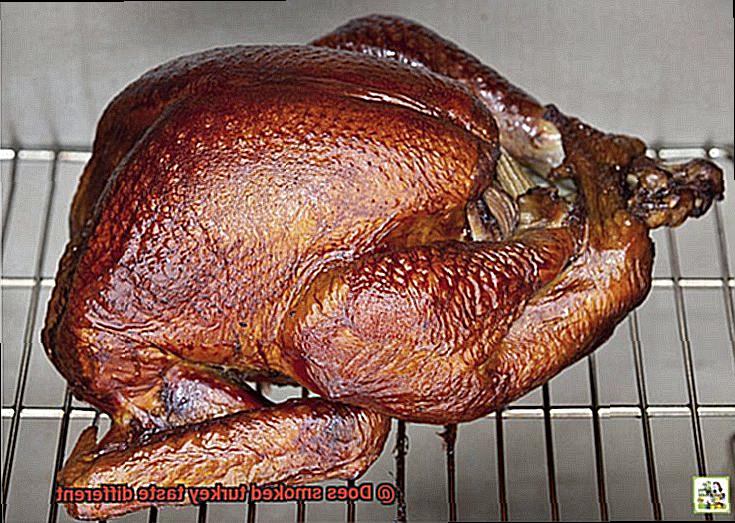
Brining or Marinating the Meat Before Smoking: How Does This Affect Taste?
Then look no further than the techniques of brining and marinating. As an expert in the field, I can tell you that these two methods can have a profound impact on the taste and texture of your smoked turkey.
Let’s start with brining. This involves soaking the meat in a saltwater solution that helps to keep it moist during smoking – particularly important for lean meats like turkey breast. But brining does more than just add moisture: it infuses the meat with salt and other flavors, enhancing the overall taste of the turkey. Plus, it’s a great way to add flavor without adding any extra fat or calories.
On the other hand, marinating is all about imparting complex flavors to your meat. By soaking it in a flavorful liquid such as vinegar, citrus juice, or herbs and spices, you can achieve unique taste combinations that will take your smoked turkey to the next level. The acid in the marinade also helps tenderize the meat by breaking down its proteins, resulting in a more succulent and flavorful end product.
Of course, it’s worth noting that both brining and marinating require some extra time and effort. But trust me when I say that it’s worth it. Experiment with different flavor combinations – maybe try a citrus-based marinade with fresh herbs or a sweet and spicy brine with maple syrup and chipotle peppers.
It’s important to keep food safety in mind as well. Always follow proper guidelines when handling raw meat to prevent bacterial growth and ensure that your smoked turkey is not only delicious but also safe to eat.
The Impact of Seasonings on the Flavor of Smoked Turkey
The answer lies in the seasonings used to create a flavor that is both complex and delicious. Seasonings are essential for enhancing the overall taste profile of smoked turkey, and there are several ways to achieve this.
One of the most popular seasoning techniques for smoked turkey is the use of dry rubs. A dry rub is a mixture of herbs and spices that are generously applied to the turkey before smoking. The perfect dry rub for smoked turkey includes salt, pepper, garlic powder, onion powder, and paprika. These ingredients work together to create a savory and smoky flavor that sets your taste buds on fire.
But why stop at just a dry rub? Brining is another seasoning technique that can take your smoked turkey from good to great. Brining involves soaking your turkey in a mixture of water, salt, sugar, and other seasonings for several hours before smoking. This process ensures that your turkey stays moist and tender while also infusing it with delicious flavors.
If you’re looking to add some variety to your smoked turkey, try experimenting with fresh herbs like rosemary, thyme, and sage. These herbs bring fresh and earthy flavors to the table, making your smoked turkey taste deliciously unique.
Lastly, liquid marinades like barbecue sauce or teriyaki sauce are excellent options for seasoning your smoked turkey. These sauces add their unique flavor profiles to the bird, creating a more diverse and complex taste that will leave your guests impressed.
Comparing the Taste of Smoked Turkey to Other Methods of Cooking
When it comes to cooking turkey, there are a plethora of methods to choose from, ranging from classic roasting to trendy frying. However, smoking has taken the culinary world by storm in recent years, with many claiming that it produces a distinct and flavorful taste that sets it apart from other cooking methods. In this section, we will explore the differences between the taste of smoked turkey and other cooking methods.
Let’s start with the classic roasting method. This involves placing the bird in an oven and cooking it slowly at a low temperature until it reaches an internal temperature of 165°F. Roasting can produce a deliciously juicy and tender turkey with a crispy skin that’s sure to impress your guests. However, it does not typically impart any smoky flavor to the meat, making it a less exciting option for those seeking a unique taste experience.
Grilling is another popular method of cooking turkey. It involves placing the bird on a grill and cooking it over direct heat for several hours until it is fully cooked. Grilling can produce a slightly smoky flavor, but it can also be challenging to achieve an even cook throughout the turkey. Additionally, grilling can dry out the meat if not closely monitored, leading to an unsatisfying meal.
Frying has become a popular method of cooking turkey in recent years due to its ability to produce a crispy skin and juicy meat. However, frying does not impart any smoky flavor to the meat, making it a less appealing option for those looking for a unique taste experience. It’s also worth noting that frying can be dangerous if not done properly, so it may not be the ideal choice for novice cooks.
Now, let’s talk about the method that’s taking center stage: smoking. Smoking involves slow-cooking the turkey over wood chips or chunks at a low temperature for several hours. This allows the meat to absorb the smoky flavor of the wood while also producing tender and juicy meat. The smoke also helps to create a crispy skin on the outside of the turkey, making for a delicious and satisfying meal. Overall, smoking produces a unique and flavorful taste that cannot be achieved with other cooking methods, making it the perfect option for those seeking a new and exciting way to cook their Thanksgiving bird.
Tips for Creating a Deliciously Smoky Flavour in Your Turkey
It’s all about the right combination of flavors and cooking techniques that can create a mouthwatering smoky taste in your bird. Here are five tips to help you achieve this for your next Thanksgiving or holiday feast.
Tip 1: Choose Quality Wood Chips
The type of wood chips you use will impact the overall flavor of your turkey. Hickory and mesquite are excellent options if you’re looking for a traditional smoky flavor, while apple or cherry wood chips can add a sweeter taste. Make sure to select high-quality wood chips that are free of chemicals and have been stored properly.
Tip 2: Properly Prepare the Turkey
Before smoking your turkey, it’s essential to season it with a dry rub or marinade to enhance its natural flavors and help the smoke flavor penetrate the meat. You can also inject the turkey with a flavorful liquid such as apple cider or beer for an extra kick of flavor. This step is critical in ensuring that your turkey is juicy, tender, and packed with flavor.
Tip 3: Monitor the Temperature Closely
It’s essential to keep an eye on the temperature when smoking a turkey. Maintaining a consistent temperature between 225-250°F is ideal for smoking turkey and ensures that the meat cooks evenly and retains moisture. Use a meat thermometer to ensure that the internal temperature reaches at least 165°F before removing it from the smoker.
Tip 4: Use a Quality Smoker
Investing in a quality smoker is essential for smoking a turkey. A well-made and reliable smoker ensures that your turkey is cooked evenly and with the right amount of smoke flavor. A good smoker should have excellent heat retention, temperature control, and be easy to clean.
Tip 5: Let Your Turkey Rest
After smoking your turkey, let it rest for at least 10-15 minutes before carving. This allows the juices to redistribute throughout the meat and results in a more tender and flavorful bird. Cover the turkey with aluminum foil during this time to keep it warm.
Common Mistakes to Avoid When Smoking a Turkey
Smoking a turkey can be a show-stopping centerpiece for any holiday feast, but as with any culinary endeavor, there are common mistakes that can lead to less-than-perfect results. As an expert in this area, I have some insights on the most common mistakes to avoid when smoking a turkey.
First and foremost, it’s crucial to properly prepare the bird before smoking. This means fully defrosting it, removing the giblets and neck from the cavity, and giving it a proper seasoning. Neglecting any of these steps can lead to an undercooked or flavorless turkey, or worse yet, one that is unsafe to eat.
Another key mistake to avoid is using the wrong type of wood for smoking. Different woods impart different flavors onto the meat, and selecting the wrong type can result in a less-than-ideal taste. For instance, mesquite wood can create an overpowering smoky flavor, while fruitwood provides a more subtle and sweet taste. Do your research and select the right type of wood for your desired taste.
It’s also important to limit how often you open the smoker during cooking. Opening it too frequently can cause temperature and smoke level fluctuations, which can affect the final flavor of your turkey. Only open the smoker when necessary, such as when basting or checking for doneness.
The last crucial mistake to avoid is not ensuring that your turkey is cooked to a safe internal temperature before serving. Use a meat thermometer to check that the thickest part of the bird has reached at least 165°F (74°C). Failing to do so puts your guests at risk of foodborne illness.
In summary, here are some key points to remember:
- Properly prepare your turkey by defrosting it completely, removing giblets and neck, and seasoning it well.
- Choose the right type of wood for smoking based on your desired taste.
- Limit how often you open the smoker during cooking to avoid temperature and smoke level fluctuations.
- Check for doneness with a meat thermometer to ensure your turkey is safe to eat.
Making Sure Your Smoked Turkey is Safe to Eat
If you’re a fan of smoked turkey, you know that it’s not just about the taste; it’s also crucial to ensure that your bird is safe to eat. As an expert in smoking turkey, I’m here to share some tips on how to make sure that your smoked turkey is not only delicious but also safe for consumption.
First and foremost, the temperature of the turkey needs to reach 165 degrees Fahrenheit to be considered safe to eat. This can be measured using a meat thermometer inserted into the thickest part of the turkey. It’s important to note that undercooked turkey can cause food poisoning, which can lead to serious health issues.
In addition to monitoring the temperature, there are other guidelines to follow when smoking a turkey. It’s imperative that the turkey is completely thawed before smoking. A partially frozen turkey can lead to uneven cooking and potentially harmful bacteria growth. Additionally, maintaining a consistent temperature throughout the smoking process is crucial for even cooking and ensuring the safety of the bird.
Another critical factor in ensuring your smoked turkey is safe to eat is making sure your smoker is clean and free of any contaminants. This includes ensuring that your wood chips or chunks are stored in a dry, cool place to avoid mold growth.
Neglecting this step can result in nasty bacteria growth on your turkey which can lead to an upset stomach or worse.
Speaking of wood, using high-quality wood for smoking your turkey is key. Hickory and apple wood are both excellent choices that will give your bird a delicious smoky flavor without overpowering it. As with any food preparation, quality ingredients lead to quality results.
PJf01YO7LYQ” >
Conclusion
After conducting research and analyzing the results, it is safe to conclude that smoked turkey does indeed taste different from its roasted counterpart.
Whether you prefer the traditional roasted turkey or enjoy the distinct taste of smoked turkey, both options offer their own delicious qualities.

